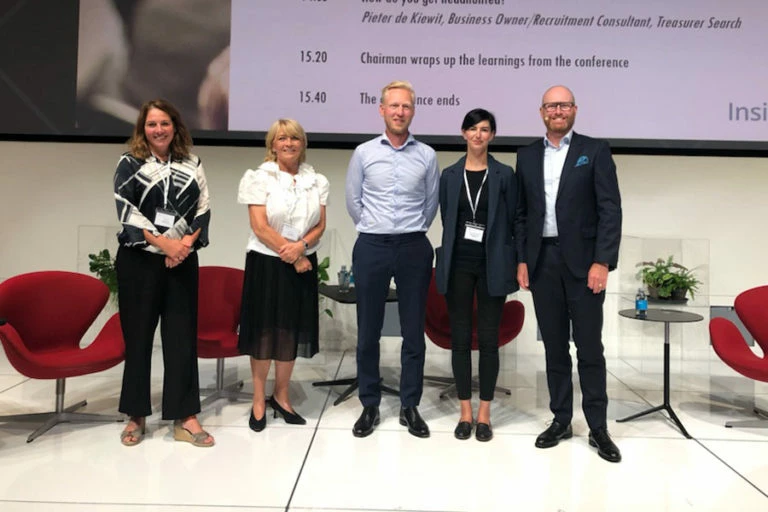A ‘super easy’ process
Pandora’s sustainability-linked RCF ties its borrowing costs to its progress on two sustainability goals: becoming carbon-neutral in its own operations by 2025 and using only recycled silver and gold by 2025.
Kristian Skovfoged, Treasury Director at Pandora, described the process of setting up the sustainability-linked RCF as straightforward and hassle-free. After initiating dialogue with Nordea around two years ago, he said he contacted fellow panellist, Marissa Saretsky, Pandora’s Director of Corporate Sustainability, to figure out what targets to use.
“When you have a good ESG team, like we do in Pandora, linking the actual targets to the loan is more of a formality,” he said, adding that he then presented the targets to Nordea, and they were accepted.
“From a corporate treasury perspective, it’s been super easy,” Skovfoged said, also noting that the documentation is nothing to fear.
Confidence in the targets
Under Coop’s ESG-linked senior credit agreement, the sustainability component affects DKK 1 billion of the credit facility and links the credit margin to two objectives covering CO2 emission reductions and responsible supplier management.
Anne Holm, Group Treasurer at Coop Danmark, emphasized the importance of being confident in the company’s ability to meet the designated targets, while still ensuring that they are ambitious.
“As a treasurer, the worst thing is to not be fully aware of the company’s ability to fulfil the KPIs. You need to get confidence around that before you go into the documentation,” she said.
Pandora’s Saretsky noted that the same confidence is needed when it comes to the data that’s provided year-on-year to show that the company is working effectively towards achieving its targets.
“There’s assurance attached to the ESG data and KPIs. You have to have strong confidence in the data, that it’s right. Ideally you’ve been working on this for many years already,” she said.
Signe Frese, CSR Director at Coop, said the experience with the ESG-linked deal highlighted how the work is breaking new ground.
“I expected a clearer definition of what an ESG-linked loan is. I discovered that we’re very pioneering here in terms of setting the standards,” she said.
Nordea’s Immelborn agreed that the market is immature, lacking standards and definitions. However, the field is rapidly evolving.
“In sustainable finance, over the next few years, we’ll see a lot of innovation in the industry, new structures, harmonization and better data quality that will compel sustainability-linked loans,” he said.
What’s the motivation?
Immelborn asked the panellists what the catalyst was for embarking on an ESG-linked loan.
“If we hadn’t included ESG, I think our board would have been extremely disappointed,” said Pandora’s Skovfoged. “It’s something that’s becoming the new normal.”
In Pandora’s case, meeting the targets translates into savings of DKK 7 million per year, which isn’t “big money,” according to Skovfoged. However, the purpose is to push the company in the right direction by integrating ESG into its financing.
Immelborn noted that the question used to come up whether the potential savings were significant enough to justify such loans.
“I think we’re beyond that now. Too many stakeholders are asking, ‘What do you do as a company?’” he said.
In June, Peder Bach, Head of Nordea’s Large Corporates & Institutions Denmark, told Finans that he expected Danish companies to have sustainability-linked loan agreements worth around DKK 200 billion within three years.
Immelborn shared that optimism at the event, saying, “This is something that is here to stay. We expect a lot of activity to go on in the next period of time.”




